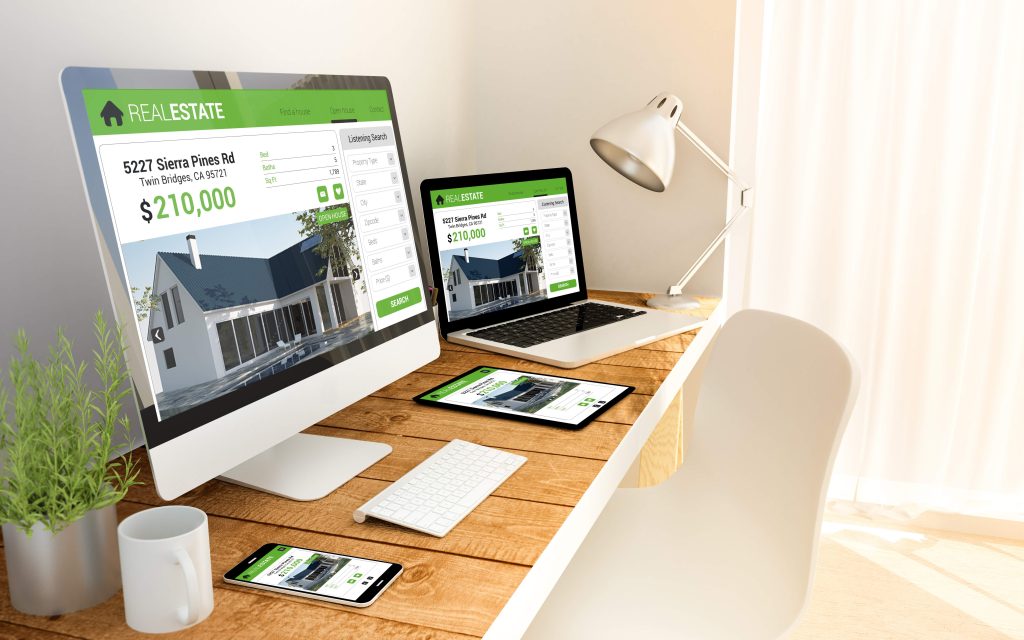In today’s digital age, your real estate broker website is often the first point of contact between you and potential clients. As a real estate broker, having a strong online presence is not just an advantage—it’s a necessity. A powerful website can set you apart from the competition, establish your credibility, and drive more leads to your business. Here are the key elements to building and maintaining a robust website presence that resonates with your target audience.
Professional Design and Branding
Your website should reflect the professionalism and reliability of your real estate services. A well-designed website with consistent branding is crucial for making a strong first impression. Ensure that your site’s design is clean, modern, and visually appealing, with a clear reflection of your brand’s identity, including logos, color schemes, and typography.
Tips for Professional Design:
– Invest in a high-quality, responsive design that looks great on all devices.
– Use high-resolution images and videos to showcase properties and services.
– Keep the layout simple and intuitive, with easy-to-navigate menus.
– Ensure that your branding is consistent across all pages, from the homepage to the contact form.
User-Friendly Navigation
A strong website presence hinges on providing a seamless user experience. Visitors should be able to find the information they need quickly and easily. User-friendly navigation is key to keeping potential clients engaged and reducing bounce rates.
Optimizing Navigation:
– Organize your website into clear categories, such as property listings, services, about us, and contact information.
– Implement a search function to help users find specific properties or content.
– Use descriptive labels for menu items that are easy to understand.
– Include a clear call-to-action (CTA) on every page, guiding visitors towards making inquiries or viewing listings.
High-Quality Content
Content is king, especially in the real estate industry. High-quality, informative content not only attracts visitors but also positions you as an authority in the field. Regularly updating your website with fresh content helps to keep it relevant and engaging.
Content Strategies:
– Create a blog where you can share market insights, tips for buyers and sellers, and neighborhood guides.
– Use detailed property descriptions that highlight key features, benefits, and unique selling points.
– Incorporate client testimonials and case studies to build trust and credibility.
– Offer downloadable resources like eBooks or market reports to capture leads.
Mobile Optimization
With more people accessing the internet via smartphones and tablets, having a mobile-optimized website is no longer optional. A mobile-friendly design ensures that your website looks and functions well on smaller screens, providing a smooth user experience.
Mobile Optimization Tips:
– Use a responsive design that automatically adjusts to different screen sizes.
– Optimize images and videos for faster loading times on mobile devices.
– Simplify navigation and forms for easier use on touch screens.
– Test your website regularly on various devices to ensure compatibility.
Fast Load Times
Website speed is a critical factor in both user experience and SEO rankings. A slow-loading site can frustrate visitors and lead to higher bounce rates. Ensuring your website loads quickly will keep users engaged and improve your chances of converting them into clients.
Improving Load Times:
– Compress images and use efficient file formats like WebP.
– Minimize the use of heavy scripts and plugins.
– Enable browser caching and use a content delivery network (CDN) to speed up loading times.
– Regularly test your site’s speed using tools like Google PageSpeed Insights and make adjustments as needed.
Strong Call-to-Action (CTA)
Every page on your website should have a clear and compelling call-to-action. Whether it’s encouraging visitors to contact you, sign up for a newsletter, or schedule a viewing, CTAs are essential for driving conversions and generating leads.
Creating Effective CTAs:
– Use action-oriented language that prompts visitors to take the next step (e.g., “Schedule a Tour,” “Get a Free Market Analysis”).
– Place CTAs prominently on the page, such as at the end of a blog post or in the header of your homepage.
– Make sure the CTA stands out visually, using contrasting colors or buttons.
– Consider using pop-ups or sticky banners to keep CTAs visible as users scroll through your site.
Conclusion
A strong real estate broker website presence is a vital component of your success as a real estate broker. By focusing on professional design, user-friendly navigation, high-quality content, SEO, and mobile optimization, you can create a website that not only attracts visitors but also converts them into loyal clients. Keep these keys in mind as you build and refine your website, and you’ll be well on your way to establishing a dominant online presence in the real estate market.
Read More About Broker
Tags: Real Estate Website, RealEstateBrokerWebsites, RealEstateTechnology


